edsel ford
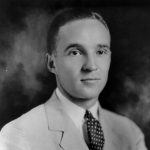
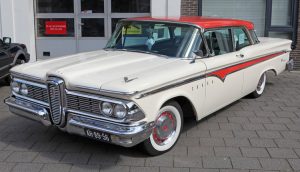 Despite having a domineering father, who was never pleased with anything he did, Edsel Ford, the son of the founder of Ford Motors is mainly remembered for the Edsel, a failed 1958-60 car model. In reality, he was one of the masterminds of the Allied victory in World War II. Against the wishes of his father, Edsel Ford telephones William Knudsen of the U.S. Office of Production Management on June 12, 1940, to confirm Ford Motor Company’s acceptance of Knudsen’s proposal to manufacture 9,000 Rolls-Royce-designed engines to be used in British and United States airplanes. In all, they would build, 9,000 B-24 Liberator bombers, 278,000 Jeeps, 93,000 military trucks, 12,000 armored cars, 3,000 tanks, and 27,000 tank engines, but it was not without a few stumbling blocks. Edsel and Charles Sorensen, Ford’s production chief, had apparently gotten the go-ahead from Henry Ford by June 12, when Edsel telephoned Knudsen to confirm that Ford would produce 9,000 Rolls-Royce Merlin airplane engines (6,000 for the RAF and 3,000 for the U.S. Army). However, as soon as the British press announced the deal, Henry Ford personally and publicly canceled it, telling a reporter: “We are not doing business with the British government or any other government.”
Despite having a domineering father, who was never pleased with anything he did, Edsel Ford, the son of the founder of Ford Motors is mainly remembered for the Edsel, a failed 1958-60 car model. In reality, he was one of the masterminds of the Allied victory in World War II. Against the wishes of his father, Edsel Ford telephones William Knudsen of the U.S. Office of Production Management on June 12, 1940, to confirm Ford Motor Company’s acceptance of Knudsen’s proposal to manufacture 9,000 Rolls-Royce-designed engines to be used in British and United States airplanes. In all, they would build, 9,000 B-24 Liberator bombers, 278,000 Jeeps, 93,000 military trucks, 12,000 armored cars, 3,000 tanks, and 27,000 tank engines, but it was not without a few stumbling blocks. Edsel and Charles Sorensen, Ford’s production chief, had apparently gotten the go-ahead from Henry Ford by June 12, when Edsel telephoned Knudsen to confirm that Ford would produce 9,000 Rolls-Royce Merlin airplane engines (6,000 for the RAF and 3,000 for the U.S. Army). However, as soon as the British press announced the deal, Henry Ford personally and publicly canceled it, telling a reporter: “We are not doing business with the British government or any other government.”
Unlike other automakers, Ford had already built a successful airplane in the 1920s called the Tri-Motor. That fact made them the logical choice when the war effort needed more planes. In two meetings in late May and early June 1940, Knudsen and Edsel Ford agreed that Ford would manufacture the new fleet of aircraft for the RAF on an expedited basis. The one significant obstacle was Edsel’s father Henry Ford, who still retained complete control over the company he founded, even though he had turned the figurehead control over to his son. Henry Ford was well known for his opposition to the possible U.S. entry into World War II, so it would be up to Edsel to convince him that it was necessary.
According to Douglas Brinkley’s biography of Ford, “Wheels for the World,” Henry Ford had in effect already accepted a contract from the German government. The Ford subsidiary Ford-Werke in Cologne was doing business with the Third Reich at the time, which Ford’s critics took as proof that he was concealing a pro-German bias behind his claims to be a man of peace. Nevertheless, as U.S. entry into the war became more of 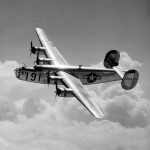
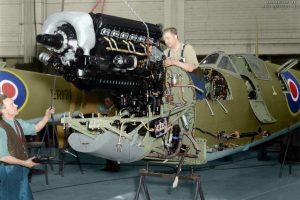 a certainty, Ford reversed his position, and the company opened a large new government-sponsored facility at Willow Run, Michigan in May of 1941, for the purposes of manufacturing the B-24E Liberator bombers for the Allied war effort. Ford Motor plants also produced a great deal of other war materiel during World War II, including a variety of engines, trucks, jeeps, tanks and tank destroyers. The production needs met by Ford Motor Company during World War II were instrumental in the Allied victory in that war.
a certainty, Ford reversed his position, and the company opened a large new government-sponsored facility at Willow Run, Michigan in May of 1941, for the purposes of manufacturing the B-24E Liberator bombers for the Allied war effort. Ford Motor plants also produced a great deal of other war materiel during World War II, including a variety of engines, trucks, jeeps, tanks and tank destroyers. The production needs met by Ford Motor Company during World War II were instrumental in the Allied victory in that war.
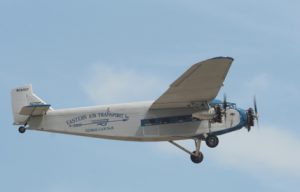 In the early history of airplanes, they were used for things like mail. No one had really considered other uses, or if they did, the idea was far in the future in the minds of most people. Nevertheless, there was one man…William Bushnell Stout, who was an aeronautical engineer. William had previously designed several aircraft using principles similar to, and originally devised by Professor Hugo Junkers, the noted German all-metal aircraft design pioneer. Junkers was one of the mainstays of the German aircraft industry in the years between World War I and World War II. In particular his multi-engined all-metal passenger and freight planes helped establish airlines in Germany as well as all over the world. Stout designed planes using the same principles as Junkers had, but they were pretty much on paper. Then in the early 1920s, Ford Motor Company Henry Ford, along with a group of 19 other investors including his son Edsel, invested in the Stout Metal Airplane Company. Stout, a bold and imaginative salesman, sent a mimeographed form letter to leading manufacturers, asking for $1,000 and telling them, “For your one thousand dollars you will get one definite promise: You will never get your money back.” Stout raised $20,000, including $1,000 each from Edsel and Henry Ford. It’s hard for me to imagine that he would get even one investor, but I guess they figured he was, if nothing else, truthful.
In the early history of airplanes, they were used for things like mail. No one had really considered other uses, or if they did, the idea was far in the future in the minds of most people. Nevertheless, there was one man…William Bushnell Stout, who was an aeronautical engineer. William had previously designed several aircraft using principles similar to, and originally devised by Professor Hugo Junkers, the noted German all-metal aircraft design pioneer. Junkers was one of the mainstays of the German aircraft industry in the years between World War I and World War II. In particular his multi-engined all-metal passenger and freight planes helped establish airlines in Germany as well as all over the world. Stout designed planes using the same principles as Junkers had, but they were pretty much on paper. Then in the early 1920s, Ford Motor Company Henry Ford, along with a group of 19 other investors including his son Edsel, invested in the Stout Metal Airplane Company. Stout, a bold and imaginative salesman, sent a mimeographed form letter to leading manufacturers, asking for $1,000 and telling them, “For your one thousand dollars you will get one definite promise: You will never get your money back.” Stout raised $20,000, including $1,000 each from Edsel and Henry Ford. It’s hard for me to imagine that he would get even one investor, but I guess they figured he was, if nothing else, truthful.
The Ford Motor Company produced the Ford Trimotor in 1927. It was one of the first all-metal airplanes. It was often called the “Tin Goose” or “Flying Washboard.” It was the first plane that was designed to carry passengers rather than mail. Now, I don’t know about you, but the idea of flying in something called the Tin Goose or Flying Washboard, would not bring with it a feeling of confidence in the machine that was suppose to get me to my destination. I have to wonder how many people they were able to get to fly in the plane in those years. The plane was designed to carry twelve people and had three engines. The three engines allowed the plane to fly higher and faster than other airplanes or that time period. The plane could reach speeds of 130 miles per hour. The Ford 4-AT-15 Trimotor monoplane, which was piloted by Berndt Balehen, was first used in the first flight over the South Pole in November if 1929.
The interior of the plane was much like the interior of a passenger car on a train. Like most of the seats of any moving vehicle, design as come a long way, both in comfort and in safety, but at that time, it was state of the art. Now planes like this are a novelty item, that people go to see, because it is something they have never seen before, and may never see again. These days, the Tin Goose flies around the country being that novelty item. Recently it came to Casper, and I really wish I had been able to go see it and take a ride…maybe next time. It would be cool to fly in a Flying Washboard or a Tin Goose.

